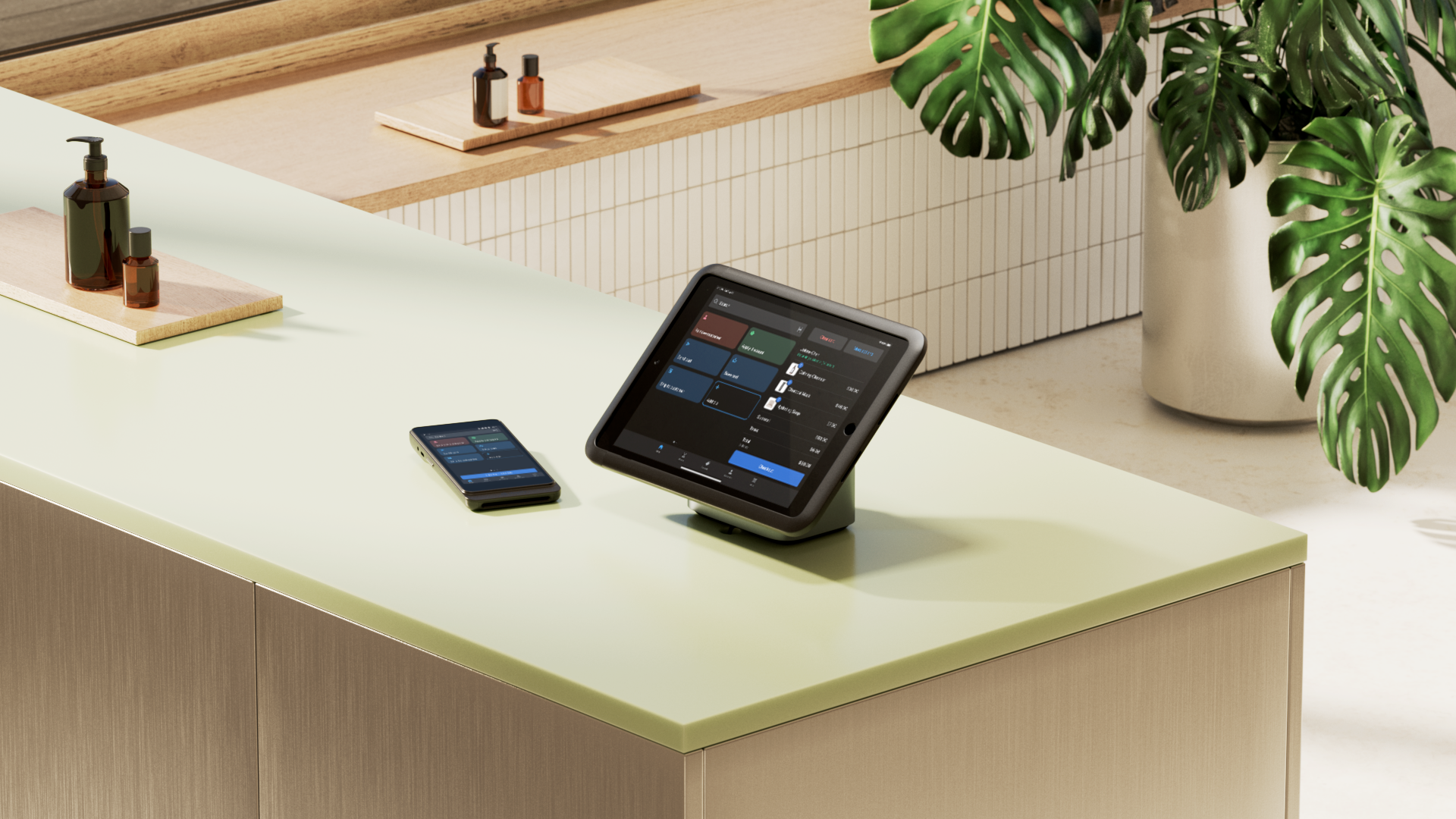Today’s customers might see your brand in many different places before they make a purchase. Facebook ad posts, Google Ads, email marketing messages, and organic search results could all play a role in their decision. This can make it difficult for you to know which marketing channels have the biggest impact on sales conversions.
Multi-touch attribution is a way to solve this problem. Instead of giving all the credit to just one touchpoint, multi-touch attribution models look at all the different marketing touchpoints with which a customer interacted. This gives marketing teams a more complete picture of which marketing channels, campaigns, and strategies actually helped make a sale happen.
What is multi-touch attribution?
Multi-touch attribution is a way to track every point at which a customer interacted with your brand before they bought something. This is in contrast to looking at just one touchpoint. Multi-touch attribution acknowledges that people might see your brand several times across different marketing channels and devices before they’re ready to buy.
Multi-touch attribution involves collecting data about every customer interaction with your brand, from the very first touchpoint when they discovered your brand to the final conversion event in which they made a purchase. With multi-touch attribution, your marketing team uses computer programs to work out how much influence each touchpoint had on a final sale. This can give you valuable insights into which marketing efforts are actually working.
For example, let’s say you have a coffee brand. A shopper first sees a Facebook ad for your reusable coffee filters on Instagram and then a targeted ad on Google, but it’s not until they receive a 20% discount via a marketing email that they commit to a purchase. Based on this information, you could then test offering a 20% discount on Instagram to see if you can capture shoppers earlier in the customer journey, reducing your ad spend.
Single-touch vs. multi-touch attribution: What’s the difference?
The big difference between single-touch attribution and multi-touch attribution models is the number of touchpoints that receive credit for a sale.
Single-touch attribution gives 100% of the credit to just one interaction. First-touch attribution credits the very first point at which a shopper interacted with your brand, while last-touch attribution credits the last place the shopper clicked before they made a purchase. These models are easy to understand, but neither one is a complete picture of how your customers make their purchase decisions.
In the coffee brand example, first-touch attribution would give 100% of the credit to the Facebook ad, whereas last-touch attribution would give the credit to the marketing email. In reality, all three of the channels (including the targeted Google ad) probably contributed to the conversion. Perhaps one ad achieved brand awareness, the second ad reinforced the person’s interest, and the third touchpoint—the offer email—encouraged the customer to take the leap and try your product.
Multi-touch attribution models acknowledge that each touchpoint plays a part in a sale, and so these models divide the credit among them accordingly. Multi-touch attribution gives some credit to the Facebook ad, some to the Google ad, and some to the email marketing. Studying this type of data can lead to more accurate insights into what your marketing channels contribute individually.
Types of multi-touch attribution models
- Linear attribution model
- Time decay attribution model
- U-shaped (position-based) attribution model
- W-shaped attribution model
- Algorithmic attribution model
If you want to spend your marketing budget wisely and make informed decisions about where to put your ad spend, pinpointing the right attribution model for your business isn’t just nice to have—it’s essential. There are several multi-touch marketing attribution models you can use, and each one has a different way of distributing credit among your marketing touchpoints. Here’s how the most common ones work:
Linear attribution model
Linear multi-touch attribution is the simplest approach because it gives equal credit to every touchpoint in the customer journey. So if someone interacted with your brand five times across multiple channels before buying something, each marketing touchpoint gets the same amount of credit (20% each).
This attribution model is easy to set up and ensures every customer interaction receives the same value. It provides a relatively complete picture of how multiple touchpoints work together. Linear attribution can be a good choice if you have short sales cycles or think all your marketing efforts are equally important. That said, it might not be totally accurate, since some marketing channels probably have a greater influence on purchasing decisions than others.
Time decay attribution model
The time decay model gives more credit to marketing touchpoints that occurred closer to the point of purchase. The rationale behind this attribution model is that the things people experience right before they make a purchase have more influence on their decision than something they saw weeks ago.
For example, let’s say someone’s customer journey took 30 days across multiple devices and marketing channels. A Google Ads click from yesterday might receive 40% of the credit, while a Facebook ad from three weeks ago might receive only 5%. This multi-touch attribution model can be a good choice in industries in which people typically take a long time to make their buying decision.
U-shaped (position-based) attribution model
The U-shaped attribution model awards the most credit to two specific touchpoints: the very first interaction (when someone discovers your brand) and the very last one (when they actually buy). Usually, these touchpoints each receive 40% of the credit, and everything between them shares the remaining 20%.
The idea behind a position-based attribution approach is that the first touchpoint (which creates initial awareness) and the final marketing touchpoints (which close the sale) are the most important. The U-shaped model can be a good choice if running awareness campaigns to acquire new customers and closing sales are your two biggest areas of focus.
W-shaped attribution model
The W-shaped attribution model builds off the U-shaped approach, adding one more important touchpoint: lead creation. A lead is a person or organization that shows some level of interest in purchasing your product or service. The W-shaped attribution model gives significant credit to three key touchpoints: the first interaction, the moment someone becomes a lead, and the final conversion. Usually, these touchpoints receive 30% credit each. The leftover credit is divided among the other marketing touchpoints.
This custom attribution model can be a good choice for businesses with separate processes for getting leads and making sales. It can give you deeper insights into how your marketing efforts are paying off at different stages of the customer journey—not just at the beginning and end.
Algorithmic attribution model
Algorithmic attribution uses machine learning and historical data to automatically figure out the best way to distribute credit among marketing touchpoints. Instead of following set rules, this attribution model learns from real customer behavior and user-level data to assign credit based on what actually influences people to buy.
This approach results in the most accurate insights but requires vast amounts of historical data and complex computer programs. It can be a good fit for big businesses with a wealth of information about customer journeys across multiple channels. The machine learning algorithms can spot patterns in customer interactions that people or simpler software programs might miss, helping you make better-informed decisions about your marketing budget and marketing strategies.
Tips for implementing multi-touch attribution
- Set clear goals and objectives
- Implement comprehensive data collection
- Analyze and optimize based on insights
Implementing multi-touch attribution takes some effort, but then it becomes an ongoing process that will give your marketing team valuable insights over time. Here are the three main steps to making it work.
1. Set clear goals and objectives
Before you pick any attribution model, decide exactly what you want to learn from your multi-touch attribution efforts. Figure out which conversion events matter most to you (like purchases, lead creation, or signups). Decide how long you want to track people (for example, 30, 60, or 90 days), and choose which marketing channels and marketing touchpoints you want to include.
Think about how long it usually takes people to buy from you. If people take a long time to make their purchase decisions, you might need to track them longer to get the complete picture. If you sell things quickly, you can focus on shorter time periods. Make sure everyone on your team understands how multi-touch attribution measurements will work before you start collecting data.
2. Implement comprehensive data collection
Good data collection is the foundation of implementing multi-touch attribution models and gaining accurate insights. You need to track everything consistently across all your marketing channels, making sure every customer interaction and marketing touchpoint is recorded properly. This includes website visits, email marketing opens and clicks, organic search visits, paid search clicks, Facebook ad interactions, display ad views, and even offline interactions when possible.
Set up systems that can follow the same person across multiple devices and marketing channels throughout their customer journey. Use proper tracking codes and conversion tracking and connect everything to your customer database so all your data syncs. Pay special attention to tracking people across different devices since customers increasingly use multiple devices when they’re deciding whether or not to buy something.
3. Analyze and optimize based on insights
Once you’ve started collecting data, regularly look at your results to spot patterns and find ways to improve your marketing efforts. Look for marketing channels that might be getting too much credit with old single-touch attribution models, and find high-performing marketing touchpoints that you might have been undervaluing in your marketing mix.
Use your multi-touch attribution insights to decide where to spend your marketing budget, moving ad spend toward marketing channels and marketing strategies that actually drive results. Keep testing and adjusting your attribution model based on what happens with your business. Don’t be afraid to change things as your business grows or customer behavior changes. This ongoing process helps marketing teams make informed decisions about where to allocate resources for the best marketing performance and ad effectiveness.
Multi-touch attribution FAQ
What is the difference between MMM and multi-touch attribution?
Marketing mix modeling (MMM) looks at the big picture of how all your marketing efforts and external factors (like the economy or seasonality) affect your overall sales over time. It uses historical data to understand what impact different marketing channels and campaigns have on your business. Multi-touch attribution focuses on individual customer journeys and user-level data instead. It tracks the specific marketing touchpoints that led each person to buy something.
What is an example of multi-touch attribution?
Let’s say someone buys a $200 pair of running shoes after seeing a Facebook ad for your brand (Day 1), a Google Ads search result when looking for “running shoes” (Day 3), an email marketing message from you (Day 7), and an organic search result (Day 10), before finally clicking on a display ad (Day 14). Using a time decay attribution model, the final display ad might receive 40% credit ($80), the organic search visit receives 25% credit ($50), the email marketing receives 20% credit ($40), the Google Ads click receives 10% credit ($20), and the original Facebook ad receives 5% credit ($10). This way of sharing credit shows how each marketing touchpoint influenced the customer’s $200 purchase decision, giving you deeper insights than single-touch attribution models that would give all the credit to either the first touchpoint or the last touchpoint.
Why is multi-touch attribution important?
Multi-touch attribution is important because it shows you what’s really happening with your marketing across multiple channels, helping you make better decisions about where to spend money. Without multi-touch attribution models, businesses often spend too much on last-click marketing channels while not investing enough in awareness campaigns and other customer consideration touchpoints that help people discover their brand and think about buying.







